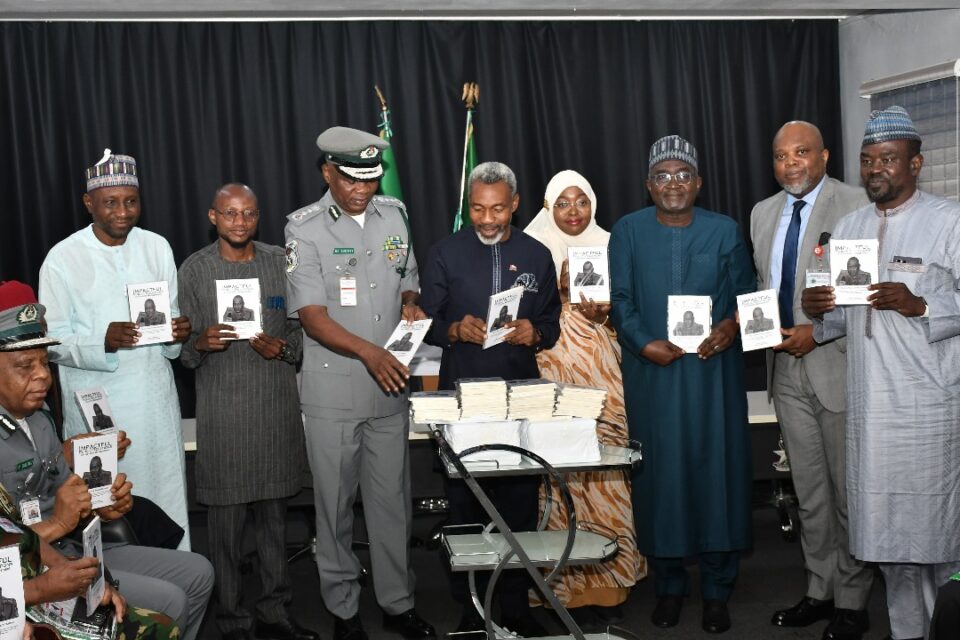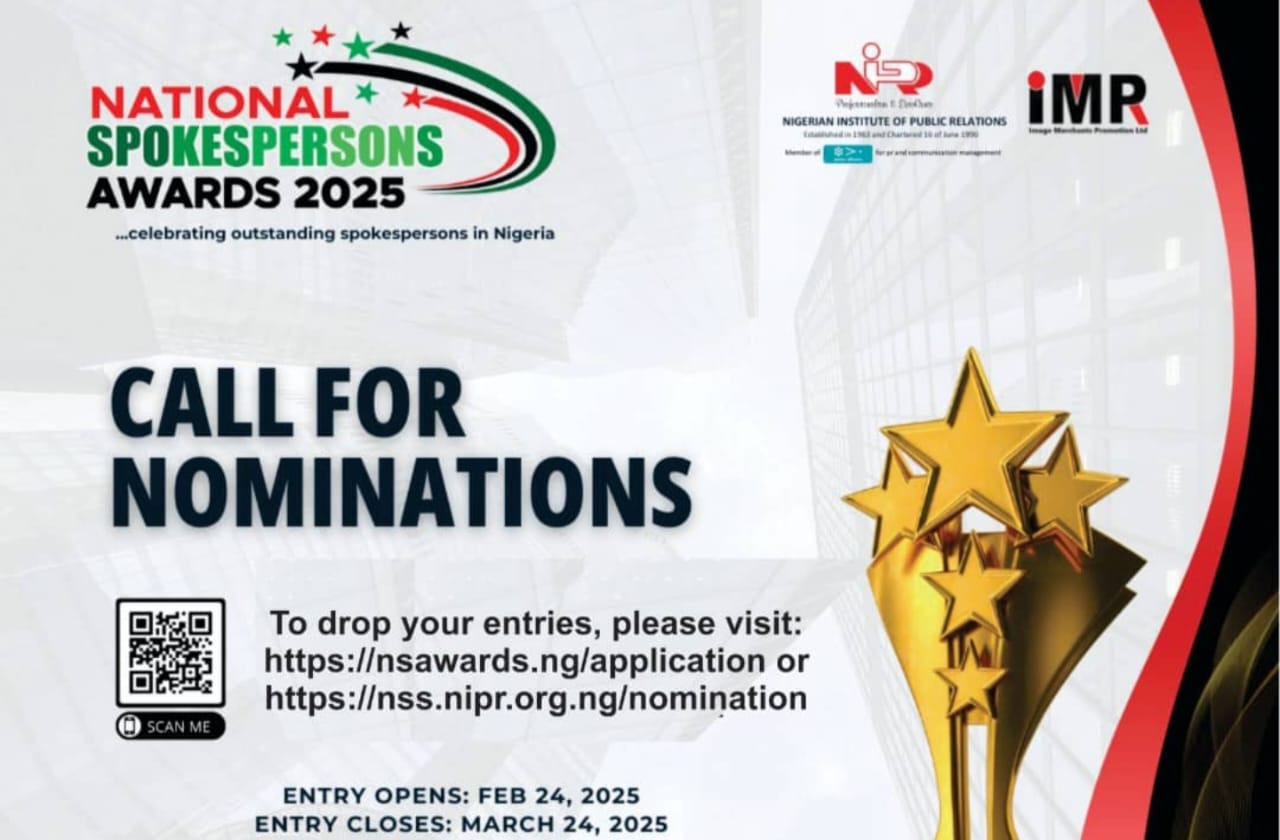
PR Lessons: Adeniyi Leading by Relating
By Prof Okey Ikechukwu
With the current national high social temperature over inflation, exchange rate concerns and other issues, it is easy to say that this is not the time to talk about the head of any institution of State at all. But not when a book is written about the person in such a way that it is as much an account of institutional history as it is also a narrative about a man whose trajectory is being inextricably woven into the story of an institution of state as well.
I met Bashir Adewale Adeniyi the Comptroller-General of Nigeria Customs Service (NCS) nearly 15 years ago, at a management retreat for senior and middle level customs officers where he was a participant. In the course of the two modules I took during the programme, I noticed how he blended into the landscape in a peculiar sort of way. Alert, unobtrusive, calmly and seemingly casual, but with a subdued air or seriousness and a friendly disposition that was also always scrutinizing the world.
He did not raise too many, or even, questions during the retreat. But he took notes. Selective notes, that is; whenever something struck him in the course of the various presentations. He was thoroughly attentive, but without seeming too absorbed like a bookworm. I said to my colleague, as I was leaving the weeklong event on the third day: “That other one with a staid and unforced composure is likely to one day become the Comptroller of Customs”. My colleague chuckled and asked why. When I replied that there was something about him that suggested such a career path, and also that he must be good at “organized engagements, without any sense, or air, of panic or trepidation”, my colleague accused me of “excessive grammar”, and we left the matter at that.
I took notice when Adeniyi routinely outperformed many who had served as spokespersons of the Nigeria Customs Service, (NCS) before him. I noticed when he was announced Comptroller General of the NCS. I also noticed when the Service embarked on the installation of scanners with a 200 containers clearance per hour capacity, under his watch.
I wrote about it on this page, on June 8, saying: “This will certainly address the problem of port congestion and drive efficiency, while putting an end to the nightmare (well, including daymare) of importers and clearing agents. One thing is clear in this regard: The Custom’s Trade Facilitation Programme of the Comptroller-General of Customs, Mr. Adewale Adeniyi, is yielding something worth looking forward to. Nigeria Customs is working in collaboration with Trade Modernisation Project Limited on this infrastructural intervention”.
Then, last week and from nowhere, Kabir Abdulsalam and Mariam Umar Na’Allah came out with a book detailing Wale Adeniyi’s responsible application of the principles of professional public relations in the management of a public organization. The book, titled, Impactful Public Relations in Customs Management, answers the following questions to a good measure: (1) Who is Wale Adeniyi? (2) How did he improve stakeholder engagement as Comptroller General of the Nigeria Customs Service? (3) To what extent can public relations skills, experience within the system and understanding of global best practices in custom administration be brought to bear on the life of a decades-old organization in a VUCA world? (4) What difference can effective management, crisis communication skills, the lobbying of decision makers, CSR initiatives, and reputation management make in the remaking of a government agency?
Using Adeniyi as a peg, the book offers the reader detailed insights into how to be successful as a leader with a Public Relations orientation. The reader who actually uses the publication as a manual for professional success in the public relation industry will be a success story. The authors insist that Adeniyi simply deployed his training in relationship management and his grasp of the dynamics of the sector, guided by sectoral and global best practices and they gave good reasons for their submission.
While the book successfully showcases the journey of one man as well as the journey of an organization under a new vision, it also shows how what Adeniyi had learnt over the years as an insider gave him the very foundation he needed for crafting and driving sustainable organizational reengineering. He made public perception management a uniquely essential component of responsible office holding. Thus, this book of 12 chapters offers the reader valuable insights, tips and professional best practices for PR professionals, using the endeavours of a seasoned practitioner as reference.
Part of what the authors set out to achieve in this book, and which they achieved in the first chapter, was to show the importance of stakeholder engagement and how the new CG of Customs adopted this approach as a tool for trust building and border community engagement. The authors also showed how this same tool and method eventually became instruments for the strengthening of regional relations under the new CG.
The PR lesson from this, especially the CGs endeavour to strike a balance between national security and trade facilitation speaks volumes about his capacity for strategic engagement while at a very sensitive duty post. The summary of those lessons is captured for the reader in this paragraph in chapter 1: “Effective stakeholder engagement positively influences organizational, outcomes, such as innovation, learning, sustainability practices, and other accomplishments”.
Chapters two and three of the book deal with media relations and press releases, as leadership, communication and organizational branding tools. The authors drew from history, and from the experiences of other nations, to drive home the relevance, significance and impact of media relations, including Adeniyi’s deployment of media visitations as a leader. Anyone who wishes to draw useful lessons about speech writing, rejoinder writing, feature/opining articles and more to look more closely at this chapter.
Chapters 4 and 5 x-ray for the reader the meaning of event management and event design, such that an essential point about the subject matter of the chapter is captured thus: “PR and event management require creativity, communication, coordination and context awareness”. And chapter 5 drives home some vital lessons on building an online persona, among other things. One of the vital lessons here, especially with regards to the positive impact of PR on NCS under Adeniyi, is captured thus in chapter 5: “…the NCS has achieved remarkable milestones in its digital presence and public engagements…”.
The sixth chapter, which deals with crisis communication, has these to tell us: (1), Get a clear understanding of what the issues are, their scope and likely impact, before you engage; (2) Secure management and/or leadership approval before taking any issue into the public domain; (3) Build trust through transparency and empathetic interpersonal relations; and (4) Ensure that there is a designated spokesperson who is trained, responsible and accessible, to handle all public engagements.
Chapters 7 and 8 deal with lobbying and CSR, respectively. Chapter 8 is important for anyone who wishes to garner useful insights into CSR as a strategic imperative and the role of CSR in community relations, especially what is written there about the “Three Categories of Good Neighbours” and the shift from CSR to responsible business strategy.
Chapter 9 of Impactful Public Relations in Customs Management, gives you practically everything you wish to know about reputation, reputation management, and how NCS used the pillars of reputation asset to make so much difference under its current CG. The tools for this include the inhouse publications circulars, official website, Nigeria customs broadcasting network (NCBN).
Here is the authors’ submission about the impact of these publications on NCS: “The strategic function of in-house publications within the Custom Service has transformed the organization’s communication landscape, fostering internal cohesion, building transparency, and trust in the public, showcasing achievements and innovations, humanizing leadership and engaging various stakeholders”.
The questions thrown up by this book, and answered for the reflective reader who sees beyond the mere narrative about the CG of Customs, include the following: (1) How does a PR professional take up hard core leadership and management position and function seamlessly in this new capacity? (2) What lines of action are open to an innovative leader who meets the pressures of the moment armed only with good ideas about love for country and knowledge of his sector? The answer to these questions lies in the book we are presenting here today.
That answers lies at the very core of what Adeniyi started, and is still doing, at NCS. Good intentions will always have a bumpy ride when the terrain is made up of competing, diverse and even dangerously domineering interests and orientations. The authors have taken us through one man’s personal journey, as well as his experiences; guided by his own competence, his resilience and his creative imagination. They have also shown how this one man’s journey has become the journey of an organization in the company of an organization.
Kabir Abdulsalam and Mariam Umar Na’Allah’s Impactful Public Relations in Customs Management, offers measurable and verifiable assertions about various aspects of PR, management and public administration. The book gives those who wish to travel on this road a road map and a guide. The observations, insights, and suggestions in the book are not at variance with the submissions of industry players and stakeholders in both the public relations profession and the regulatory agencies subsector.
The major submissions of the book are easily relatable and experience-confirmed independently. The book is, at once, an account of the trajectory of the CG of NCS and also a good profiling of what to do in an organization to make a difference; using professional PR principles and sectoral and industry knowledge.
The compact book, Impactful Public Relations in Customs Management, should be put out in the public domain for PR students and practitioners. Well-meaning individuals and organizations should purchase and generously donate as many copies as possible to faculties of mass communication, business and public administration. The book should also be considered a useful and relatable literature for the Institute of Advanced Legal Studies, Administrative Staff college of Nigeria (ASCON), the National Institute of Policy and Strategic Studies (NIPPS) and other high calibre human capital development and leadership institutions and organizations.
I consider this book a good self-advertisement for the authors and the publishers and I congratulate them for it. Their capturing of the essential PR lessons at the end of every chapter of the work is a novel and arresting encapsulation of the vitals of every segment of the book. The book shows how to lead by relating in a sustainable way.
it is easy to say that this is not the time to talk about the head of any institution of State at all. But not when a book is written about the person in such a way that it is as much an account of institutional history as it is also a narrative about a man whose trajectory is being inextricably woven into the story of an institution of state as well.
